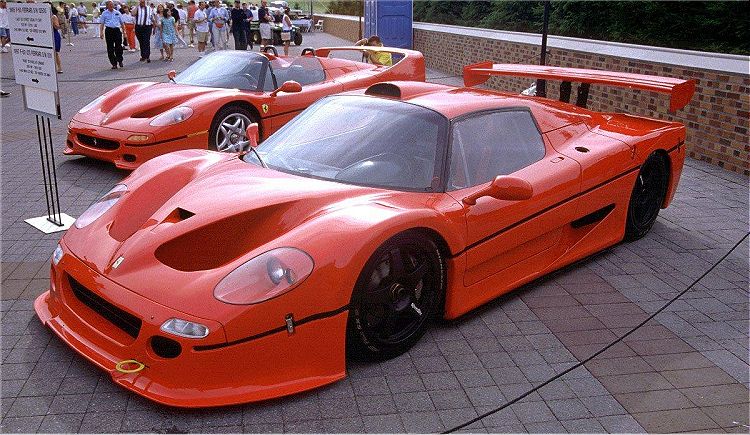Description
The Ferrari F50 GT1 was one of the most ambitious and extreme projects undertaken by Ferrari during the 1990s, developed with the intention of creating a race car capable of dominating the FIA GT1 category. Conceived as the competition version of the F50 road car, it was envisioned to rival the likes of the McLaren F1 GTR, Porsche 911 GT1, and Mercedes-Benz CLK GTR, all of which were pushing the limits of GT racing technology. Although it never reached its competitive potential, the F50 GT1 remains one of the most fascinating “what could have been” stories in Ferrari’s history.
The car’s heart was a development of the F50’s 4.7-litre naturally aspirated V12 engine, itself inspired by Ferrari’s Formula 1 technology of the time. For the GT1, output was raised to around 750 horsepower at a screaming 10,500 rpm, thanks to extensive modifications and racing-spec internals. This figure represented a dramatic increase over the 520 horsepower produced by the road-going F50. Combined with a sequential racing gearbox and a dry weight of just over 1,050 kilograms, the car promised astonishing performance. It was projected to accelerate from 0 to 100 km/h in about 3 seconds and achieve a top speed in excess of 370 km/h, which would have placed it at the very top of its category.
Visually, the F50 GT1 looked even more aggressive than its road counterpart. Ferrari and its partners fitted the car with radically reworked bodywork, optimized for maximum downforce and cooling. The open-top roadster design of the standard F50 was replaced by a fixed hardtop, and a towering rear wing dominated the rear profile. Enlarged intakes, deeper front spoilers, widened wheel arches, and smooth carbon-fiber panels gave it the presence of a pure-bred race car. Every curve and angle was dictated by aerodynamic function rather than aesthetics, and yet it retained a strikingly beautiful silhouette that echoed Ferrari’s racing heritage.
Inside, the transformation was equally dramatic. The road car’s minimalist but still leather-trimmed cabin was stripped down to a full racing environment. Lightweight racing seats, a roll cage, exposed wiring, and simple switchgear defined the cockpit. The emphasis was entirely on functionality, allowing the driver to focus exclusively on extracting performance. The result was a machine that bore little resemblance to a luxury supercar and instead embraced the ethos of endurance racing.
Despite its promise, the F50 GT1 was never given the chance to prove itself on the track. By the late 1990s, Ferrari had shifted its motorsport focus almost entirely to Formula 1, where it was preparing for a dominant era with Michael Schumacher. The costs of developing a factory-backed GT1 program, combined with rapidly escalating competition in the FIA GT Championship, made the project unsustainable. Ferrari ultimately abandoned the initiative, and only three cars were ever completed. One was retained by the factory, and the others were delivered to select customers, making them among the rarest Ferraris ever built.
In the years since, the F50 GT1 has taken on legendary status among collectors and enthusiasts. It represents an alternate path Ferrari might have taken had it committed fully to GT racing in the 1990s. Its rarity, coupled with its extreme engineering and performance potential, makes it a holy grail among Ferrari aficionados. Today, the car is celebrated not for its victories on the track but for the vision and ambition it embodied. It remains one of the most radical Ferraris ever conceived, a machine that bridged the gap between Formula 1 technology and road-going supercars, and a reminder of the bold experiments that have shaped Ferrari’s legacy.
